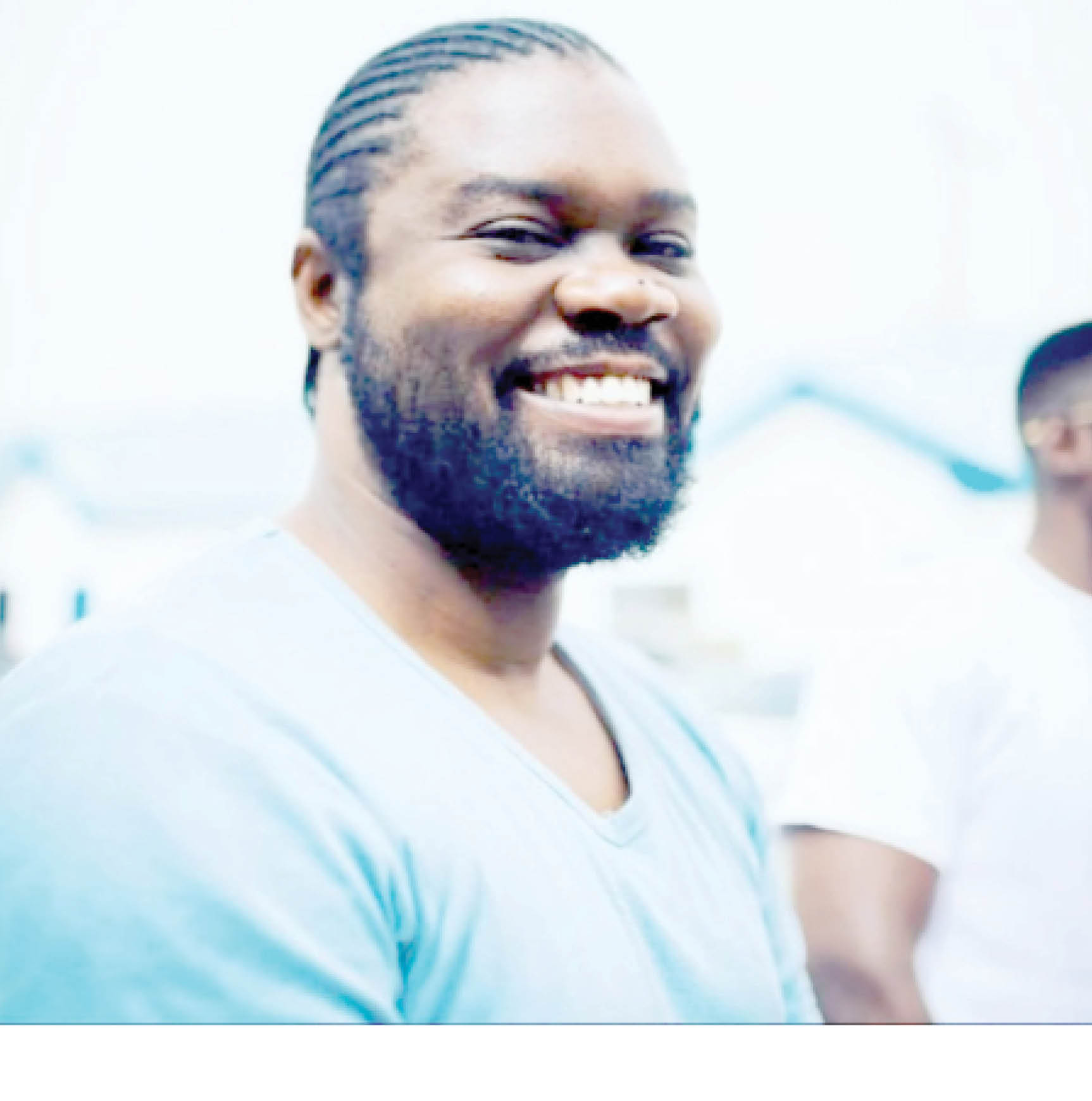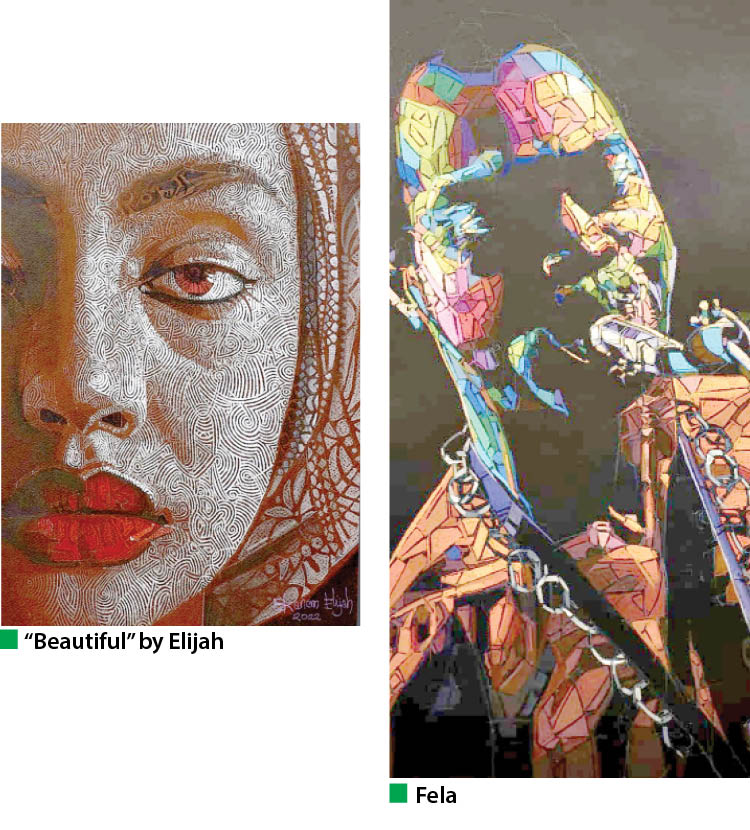Train yourself to visualize with precision – Ekanem Elijah
Ekanem Elijah is a multidisciplinary artist with love for charcoal and chalk pastels. In this interview with Daily Trust on Sunday, he speaks on his admiration for these particular mediums and also his creative process as an artist. How did you become interested in working with charcoal, chalk pastels and oil acrylics? My insatiable […]

Ekanem Elijah
Ekanem Elijah is a multidisciplinary artist with love for charcoal and chalk pastels. In this interview with Daily Trust on Sunday, he speaks on his admiration for these particular mediums and also his creative process as an artist.
How did you become interested in working with charcoal, chalk pastels and oil acrylics?
My insatiable fascination for Michelangelo Buonarroti’s charcoal drawings spurred me to adopt charcoals as a medium for artistic expression. As a teenager, he was my hero; a timeless enigma and exalted master in draughtsmanship. Therefore, my delight for charcoals increasingly grew whenever I studied and meditated on his approach in depicting his subjects. At the inception of my degree program in the Department of Fine Art, Ahmadu Bello University, Zaria, David Ndak and Terna Kaikyenge were the first guys I witnessed using chalk pastels and I was blown away and desirous to gain mastery of the medium as peculiar occasions demand. Terna, David and I were contemporaries in the Fine Art Department, who had a couple of creative tricks up their sleeves, which is why learning from them was a smart thing for me to do. I’m glad it paid off. I adore the textural romance and dynamic personality of chalk pastels. Jacques-Louis David’s painting of Napoleon crossing the Alps enticed me to embrace oil colours for creative articulation. My flair for acrylic paints is hinged on the flexibility, quick-drying quality, versatility and convenience of the medium. My goodness! Acrylics are time-savers.
What attracts you to these specific mediums compared to others?
These mediums are straightforward to control especially the charcoals and chalk pastels which have zero-drying time. They are quite affordable and easy to travel with, as well.
How would you describe the unique qualities of charcoal and oil pastels in your artwork?
They influence a lavish atmosphere and easy progression on the support (paper, canvas and so on) while capturing the 3-dimensional appearance of my subjects.
What techniques do you use to create texture and depth in your charcoal and oil pastel pieces?
I use chiaroscuro which involves the appropriation of highlight, half-tone, deep-shadow, reflected-light and cast shadow. Mastery of this technique gives one authority to determine the appearance of subjects in a compelling manner.

Can you share any tips or tricks for beginners who want to explore these mediums?
Train yourself to visualize with precision. Creatively discipline your eyes and mind to exceptionally collaborate. Personally, and technically, the usage of white charcoal differs from the black. I work from “dark” to “light” whenever I draw with white charcoal on dark card or canvas. The process feels like gradually shining light out of darkness. In addition, apply more pressure to establish stronger lights and tone. For white charcoals, the highlights require the most emphatic pressure. However, less pressure is applied when working with “black charcoals” towards the highlights. Chalk-pastel and charcoal artworks should be fixed on completion of the expression. Sealing with epoxy resin will give more brilliance.
How do you decide when to use charcoal versus oil pastels in a particular artwork?
By creating the intended pictures in my mind, first. Then I vote my preference.
Are there any specific subjects or themes that you find particularly well-suited for charcoal and chalk pastels?
Nature and mankind.
What challenges do you encounter when working with charcoal and oil pastels, and how do you overcome them?
No heart-breaking challenge, except for breakage of pencil-tips or pastel-blocks, which I find normal and advantageous to the creative task and colourful inspiration. Whenever there is a breakage, an opportunity to re-examine and modify the artwork is availed. Overwhelming pressure leads to breakage (Poor packaging and maintenance, too). Thus, treasure your mediums and cultivate an effective maintenance culture that ensures medium-intactness.
Do you have a favourite brand or type of charcoal or oil pastel that you prefer to work with?
Unison Soft Chalk pastels, Sargent Art Artist Chalk Pastels, Stabilo Chalk Pastel Pencils, Generals Charcoal Pencils
How do you approach colour and blending when using oil pastels in your artwork?
Blending is not my flair. I lay colours along sinuously imagined pathways and ensure calculated tonal placements in order to create the right aesthetic value for my artworks. Accurate placements of lines and colours create the “blend”.
Do you have a preferred surface or paper type for working with charcoal and chalk pastels?
UArt Premium Sanded Pastel Paper and Canson Pastel Paper.
Have you experimented with any unconventional techniques or materials in combination with charcoal and chalk pastels?
Of course! I experimented with oil colours, acrylics, gold-leaves, glitter, charcoals, chalk and oil pastels on canvas. Worlds of colourful fluidity and rigid harmony characterized such expressions. It is usually fun because you can pour acrylics and oils; grind pastels and charcoals then creatively persuade them to cohabit. The exploration is dynamic and endless.
How do you achieve a sense of harmony and balance between the charcoal and oil pastel elements in your artwork?
By appropriating colour theories, while emphasizing tone, value and temperature.
Do you ever use other mediums alongside charcoal, chalk pastels, and if so, how do they complement each other?
Absolutely! Occasionally, I use acrylic paints with chalk pastels and charcoals (Note: Use epoxy resin to seal the artwork). Acrylic paints are radiant, flexible and versatile. On flawless pre-primed canvas, acrylics can suitably serve as a vibrant, complimentary or contrasting base for chalk and oil pastels, oils paints and several water-based mediums.
Can you tell us about any significant influences or inspirations that have shaped your artistic style using these mediums?
As regards influences, Mr Hussein Akar has tremendously influenced the development, growth and modification of my artistic style for over a decade. He is a visionary executor who has a keen eye for exceptionalism and that quality is reflective in the direction and focus he grants me in the course of my creative journey. I say this with profound respect and gratitude to him. The top-notch tutelage of phenomenal intellectuals like Prof. Jerry Buhari, Prof. Jari Jacob, Prof. Mu’azu Mohammed Sani, Prof. Shehu Ismail Chafe, Dr Kefas Danjuma, Dr Irokanulo Emmanuel and spectacularly Prof. Duniya Gambo (who encouraged me to transform my rhythmic handwriting into a tool of expression) played exceptional roles in shaping my styles. The French palette-knife painter Nielly Francoise’s daring and provocative use of blazing hot colours ignited an advanced cultivation of audacity in colour application. Placement of colours according to their temperatures is key.
Have you noticed any changes or developments in your artwork since you started working with charcoal and oil pastels?
Yes. I started a certain style with my handwriting which has been advanced into diverse lines. In addition, my coordination in the application of lines, colours and textures heightened exponentially.
How do you approach the composition and planning stages of your artwork when working with your mediums?
I imagine a unique subject and determine the medium and size of the paper or canvas. The subject could be figurative, cross cultural and multiracial or an amalgam of several forms and features. Secure a corresponding reference. This can be a live, audio-inspired, projected-pictorial or printed reference. Sketch the reference on the desired space. Capturing proportion and determining scaling are essential. In this process, the linear structure of the subject is defined. Appropriate the medium to achieve the best result. In this stage, intuition and confidence mingle to showcase your oneness with the medium of your choice. Be in sync with your medium. Keep the artwork safe on completion of the task. Treat the artwork with dignity and prioritize its preservation. Relevant knowledge, wisdom and understanding of the qualities and usage of mediums cannot be overemphasized.
Are there any specific challenges or advantages you find in using these mediums for different subject matters, such as landscapes or portraits?
No challenge at all. For me, portraiture is landscape and landscape is portraiture. They are subjects, period. The advantage lies in training oneself to observe accurately and creatively portray subjects with exceptionalism using mediums of one’s choice. How an individual portrays subjects can either imprison one as a copycat or distinguish the individual with uniqueness and mastery (A burning and shining light).
How do you know when a piece is complete? Do you have any criteria or indicators you follow?
It is intuitive for me. The depiction of harmony and balance in an artwork tells me the deed is done. The lines, tones, shapes, forms, texture must portray undeniable equilibrium and render therapeutic qualities to me first, before other percipients.
Can you share a memorable experience or story related to your work with charcoal and chalk pastels that has impacted you as an artist?
The memorable story stems from a brief unforgettable experience I had with Prof. Duniya Gambo who drew my attention to my handwriting, after an Art History lecture. I had submitted a hand-written assignment and he observed and vocalized the possibility of my alphabets morphing into a means of “greater expression”. Yes: A language for artistic conversations, indeed. I responded in that vein and my artistic journey was transformed and is still advancing. I am eternally grateful for his words.
